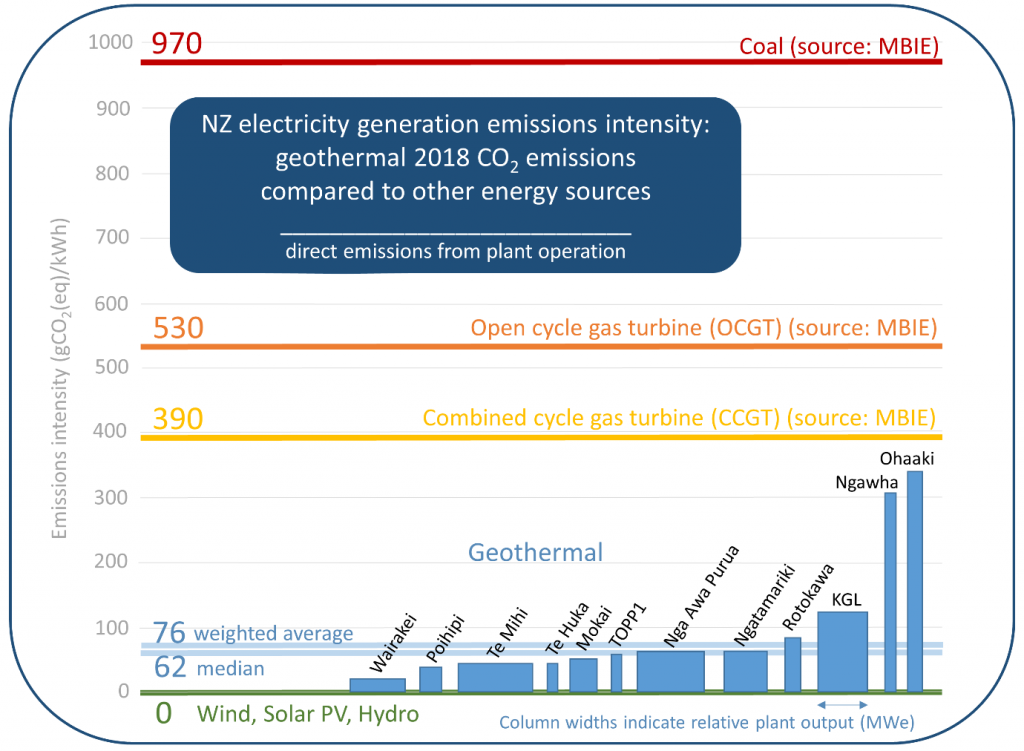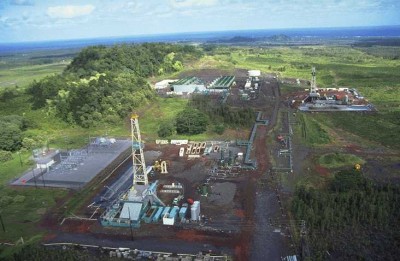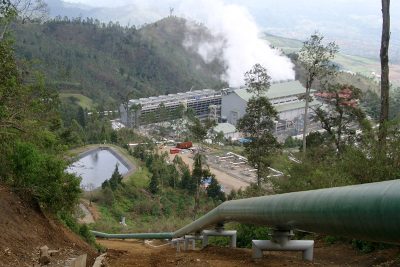NZGA shares details on greenhouse gas emissions from geothermal operations in New Zealand
The New Zealand Geothermal Association (NZGA) has shared details on greenhouse gas emissions from geothermal operations in New Zealand. Regardless of the choice of method the operational geothermal emissions intensity is higher than the other forms of renewable energy (hydro, solar, wind) but significantly lower than all fossil fuel power plants.
In this months newsletter by the New Zealand Geothermal Association (NZGA), details on a report on Geothermal Greenhouse Gas Emissions (in New Zealand) are shared.
It provides an excellent overview on the impact of geothermal power generation in New Zealand with regards to carbon emissions.
The carbon emissions from geothermal power generation have been receiving renewed attention as the worldwide impacts of climate change are becoming even more apparent, and global commitment to reducing emissions grows stronger. No source of energy is carbon-neutral, in every case there are emissions related to either construction, operation or decommissioning, or all three over the full lifecycle of the power station.
Carbon dioxide (CO2) and methane (CH4) are naturally-occurring in the geothermal reservoir fluid. In their natural state, geothermal systems release carbon dioxide (CO2) and methane (CH4) via obvious surface features such as fumaroles and bubbling pools, and also through steaming ground and flux through the soil. When a geothermal system is developed for power generation, the gases are released when boiling occurs in the power-generation process, and as the gases are non-condensable they are usually released to the atmosphere. The natural emissions from surface features usually decrease as a result of the development. There is a wide range of opinion on the degree to which the decrease in natural surface feature emissions offsets the emissions from development. Some new light will be shed on this by a three-year GNS research project led by Dr Isabelle Chambefort, which is now underway.
Regardless of any potential offset, the operational carbon emissions intensity is now routinely recorded for most geothermal power stations in NZ. This data has been collected for 2018 for all the main power stations in NZ (operated by Mercury, Contact Energy, NTGA and Top Energy), and presented at the recent NZGA seminar in Taupo on 11 July, see figure. The median of the geothermal dataset is 62 gCO2(eq)/kWh (interquartile range 45-94 gCO2(eq)/kWh), and the weighted average (weighted by total GWh of energy generation) is 76 gCO2(eq)/kWh. Regardless of the choice of method (median or weighted average) the operational geothermal emissions intensity is higher than the other forms of renewable energy (hydro, solar, wind) but significantly lower than all fossil fuel power plants.
More details and information on NZ geothermal emissions can be found in a more in depth article on the NZGA Website at: https://nzgeothermal.org.nz/geothermal-energy/emissions/
This article was prepared by Katie McLean of Contact Energy and shared in the August 2019 newsletter by NZGA.
Source: NZGA Newsletter – August 2019



















